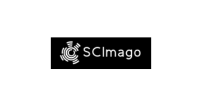FIRST ISOLATION OF Leptospira kirschneri SEROVAR CANICOLA AND Leptospira interrogans SEROVAR PYROGENES IN URINE SAMPLES FROM SLAUGHTERED CATTLE IN MIDWEST REGION OF SÃO PAULO STATE, BRAZIL
DOI:
https://doi.org/10.5380/avs.v26i1.77692Keywords:
molecular diagnosis, slaughterhouses, leptospirosisAbstract
Leptospirosis is a zoonosis of great importance in public health. One hundred and four urine samples from slaughtered cattle in Midwest region of São Paulo State, Brazil were evaluated to detect Leptospira spp. The samples were kept in PBS and in cultures of EMJH and Fletcher. We observed growth of microorganisms in 13 samples of Fletcher medium, although it was not observed in EMJH medium. By PCR, 25 animals (samples) were positive with LEP1/LEP2 primers, which of them 16 samples were kept in PBS, six samples in Fletcher medium and three in EMJH medium. The 25 samples were submitted to PCR with the LipL32 gene to verify the pathogenicity. One sample amplified and by sequencing resulted in 99.77% of similarity to Leptospira kirschneri serovar Canicola and Leptospira interrogans serovar Pyrogenes. This is the first report of isolation of Leptospira kirschneri serovar Canicola and Leptospira interrogans serovar Pyrogenes from bovine urine sample in the Midwest Region of São Paulo state, Brazil. We concluded the importance of leptospirosis in the herd evaluated and the attention for the ocupacional risk, because of the possibility of contaminated urine in the pastures and the spread of infection to other animals and contactants persons.
Downloads
Published
How to Cite
Issue
Section
License
Authors that wish to publish in AVS agree with the following conditions:
- To keep copyright of the article and allow the AVS to publish the first time. The article will be licensed by Creative Commons - Atribuição 4.0 Internacional allowing the sharing of their work.
- Authors may distribute their work by other channel of distribution (ex.: local or public repository).
- Authors have the permission to publish their work online, using different channels (similar to above), even before the final editorial process.













